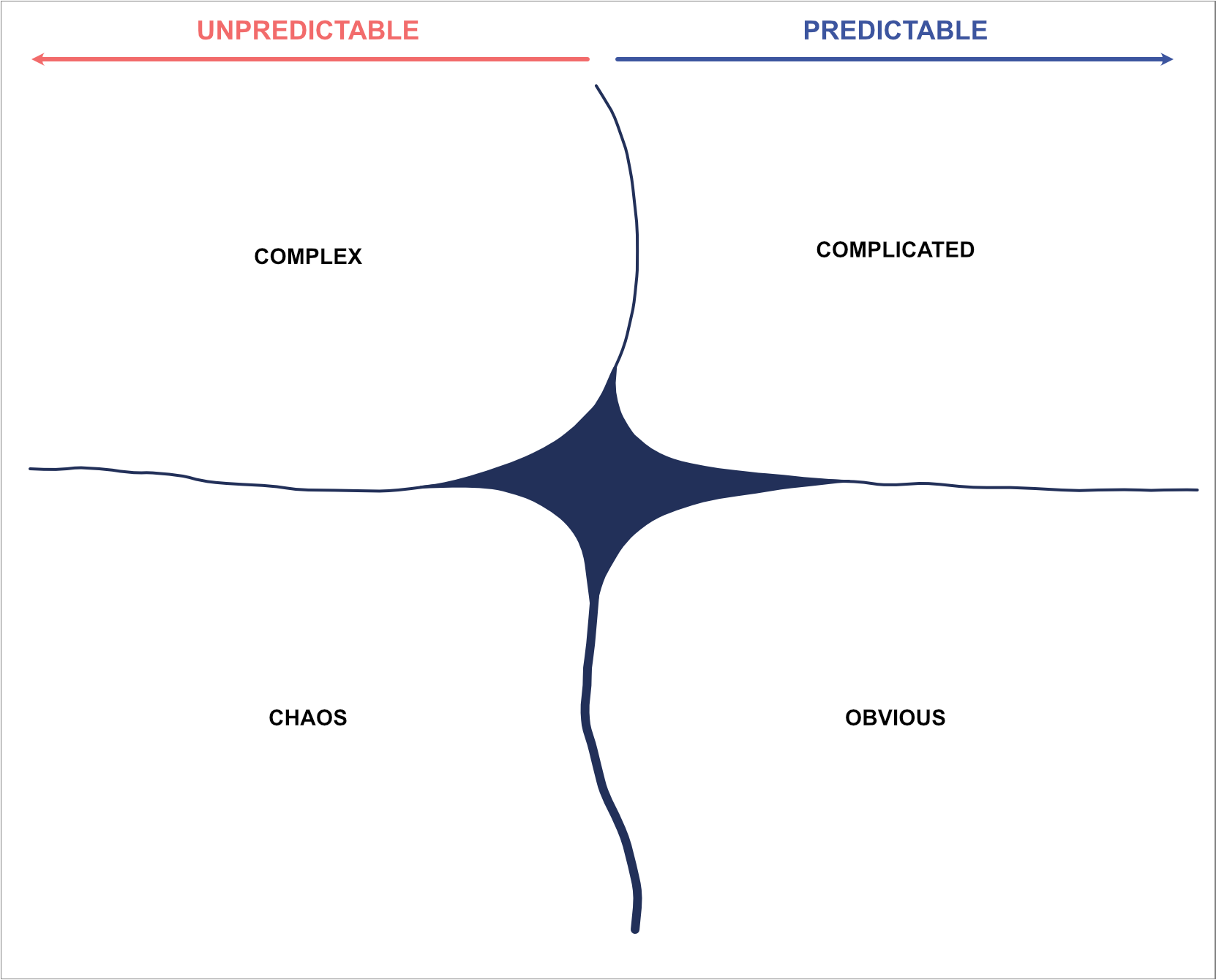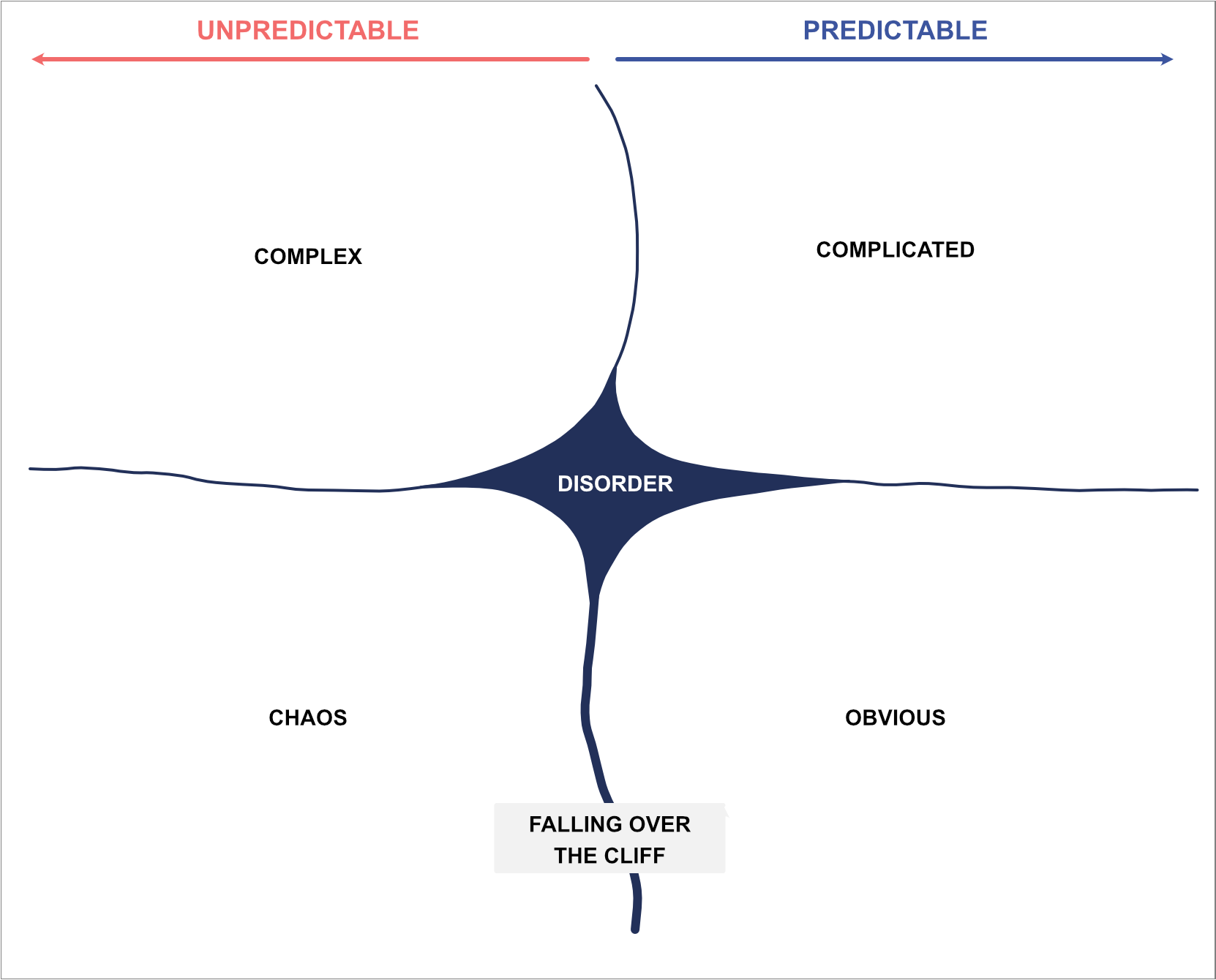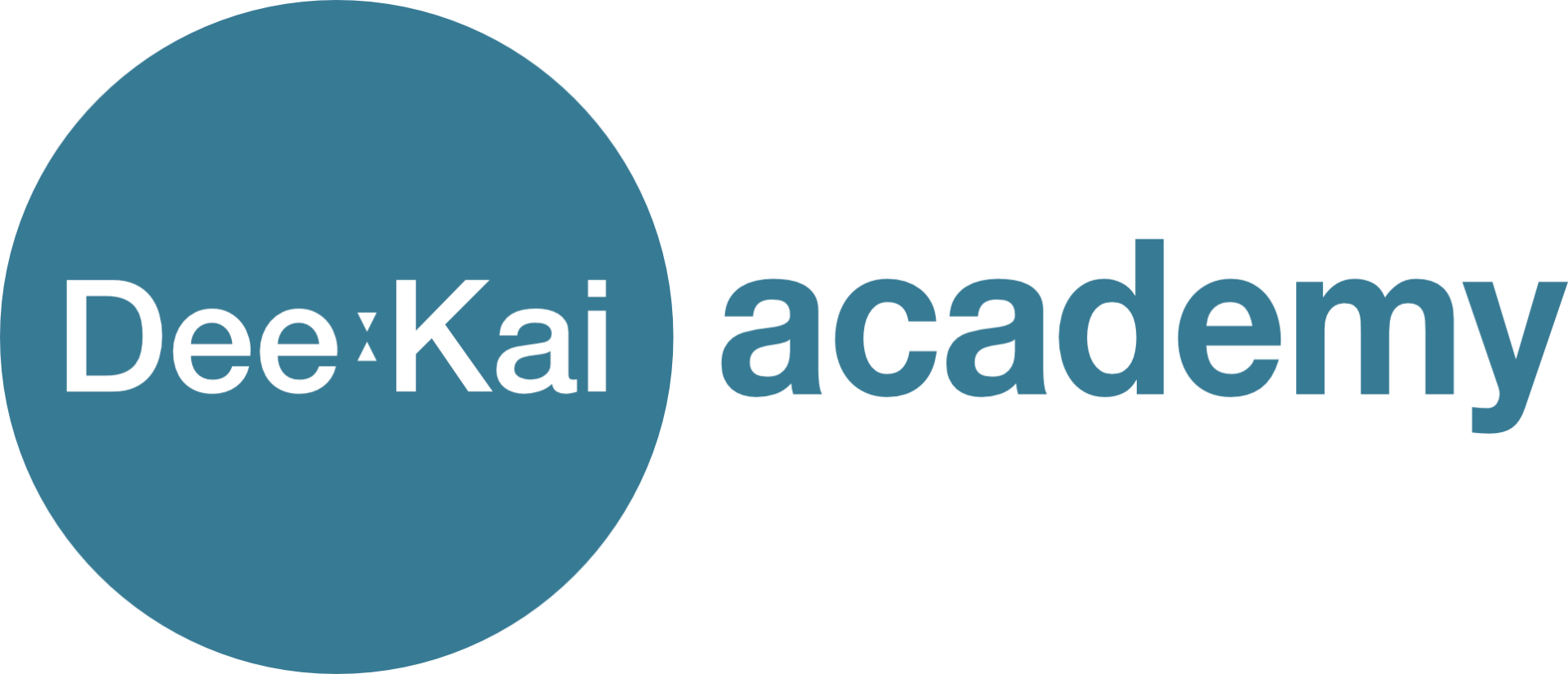As humans, we tend to develop patterns in how we make decisions. And often, those patterns and habits have worked really well for us in the past. However, they can fail us miserably if we face a completely different kind of situation.
Cynefin framework helps us understand the situation in which we have to operate and decide on a situation-appropriate approach, developed by David Snowden. Essentially, the Cynefin framework is a decision-making framework.
Cynefin is a Welsh word that literally translates to habitat or place. The term Cynefin refers to the multiple places that make up who we are, which might include religious, geographic, family, ethnic, heritage, and many other things. All of which influence our views and decisions in ways that we may not be aware of. So the name itself describes a complex system.
At first glance, the Cynefin framework may look like a standard consulting four-quadrant grid. The curvy lines, squiggles, and oddly shaped spots in the middle are all intentional. Let's first describe the main categories.

Cynefin framework makes a significant distinction between those things which are predictable and those things which are unpredictable.
In the Predictable Situation, we can expect the cause and effects are predictable, repeating time after time. By taking these steps, we will consistently get the same outcome over and over again.
Snowden further separates the predictable situation into two different categories, namely Obvious Situation, and Complicated Situation.
Things are really different in the Unpredictable Situation as the rules change. In this situation, the cause and effect are inherently unpredictable. We can't tell what will happen next, simply because it's happened before. We need to come up with new approaches, novel approaches, safe to fail experiments.
The Unpredictable Situation can be further separated as Complex Situation and Chaos Situation.

In Obvious Situation, everybody agrees the connection between cause and effect is so obvious; it is so tight; it's so apparent. The right answer is obvious and undisputed.
In Obvious Situations, we sense the problems, categorize them and respond accordingly, based on established best practices. As a solution, we typically can use well-defined processes, checklists, or repeatable sets of steps that are known to solve the problem. This is the domain of best practices.
In Complicated Situations, they are different. There is a correlation between cause and effect, but it's kind of fuzzy. This situation can only be understood through logical analysis or by bringing in domain experts in that situation.
In Complicated Situations, we sense the problems, analyze them and respond. This is the domain of good practice, meaning there are probably multiple right ways to address the problem. Forcing a single best way will cause people to be frustrated and disengage.
When dealing with Complex Situations, issues are more likely to be unpredictable than predictable. If there is a generally accepted as right answer, we will know it only with hindsight.
Working in complex situation requires both innovative and creative approaches. Routine, cookie-cutter solutions simply don't apply.
We must explore to learn about the problem, then inspect and adapt based on our learning. We need to establish a room for safe-fail environment for fast trial and error, so that we can unveiling important information. In Complex Situation, high levels of interaction and communication are essential. Innovative new-product development falls into this category, as does enhance existing products with innovative new features.
This is the domain of emergence.

In Chaos Situation, we are in a crisis situation and need to act immediately to prevent further harm and reestablish at least some order.
Let's look at this probable situation: Several social media influencers have published a video stating that our latest software release has resulted in significant issues for customers accessing the services. Our lead developer is currently on holiday and can't be reached for the whole week. Due to this situation, some of our major customers have switched to competitors.
In this very difficult case, we need the ability to act immediately and decisively to stem the bleeding. A leader must immediately take charge of the situation and act to establish control of the issue.
In the above case, a CEO may have to immediately involve external experts to resolve the situation, which will be very expensive. He may also have to offer a "huge discount" as compensation.
Snowden then further identifies the fifth situation at the center, called Disorder Situation, where we are most of the time.
In Disorder Situation, we don't know which of the domains we are in. This is dangerous because we don't know how to make sense of our situation.
The situation leads to people acting based on personal preference rather than analyzing which of the four decision-making processes are most appropriate.
Some people prefer to apply a clear process in every situation. Some prefer to take the time to analyze and research. Others want to get together with a diverse group and try experiments. Others want absolute authority to take unilateral fast, and decisive action. Unfortunately, these activities tend to result in relatively poor outcomes.
When we are in the Disorder Situation, the way out is to break down the situation into small parts and assign each to one of the other four domains with the objective of getting out of this domain.
Finally, let's take a look at the boundary between obvious and chaotic.
When we treat all problems as Obvious Situations, we tend to be complacent. We assume it's always worked; therefore, it always will. And then suddenly, something does change, and our standard processes & best practices don't account for that. As we apply "wrong decisions," the situation will then move rapidly into Chaos Situations where recovery is difficult and expensive.
Snowden's article in the Harvard Business Review calls this rapid transition from the Obvious Situation to the Chaos Situation as Falling Off The Cliff.
In today's ever-changing situation, we must always assume that we are in a Disordered Situation.
We should then assess the situation using the Cynefin framework. Cynefin framework allows us to analyze whether we are currently in a Complicated Situation, a Complex Situation, a Chaos Situation, or simply in an Obvious Situation.
Today, most world-class leaders focus on assessing Complicated Situation and Complex Situation, as Chaos Situation is relatively easy to identify. They also limit the use of Obvious Situation only for things that are low risk and appropriately predictable to avoid the potential to Fall Off the Cliff.





